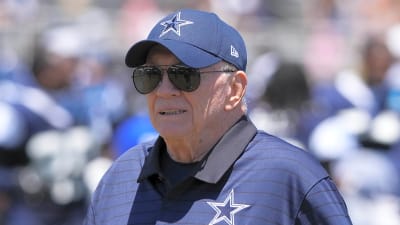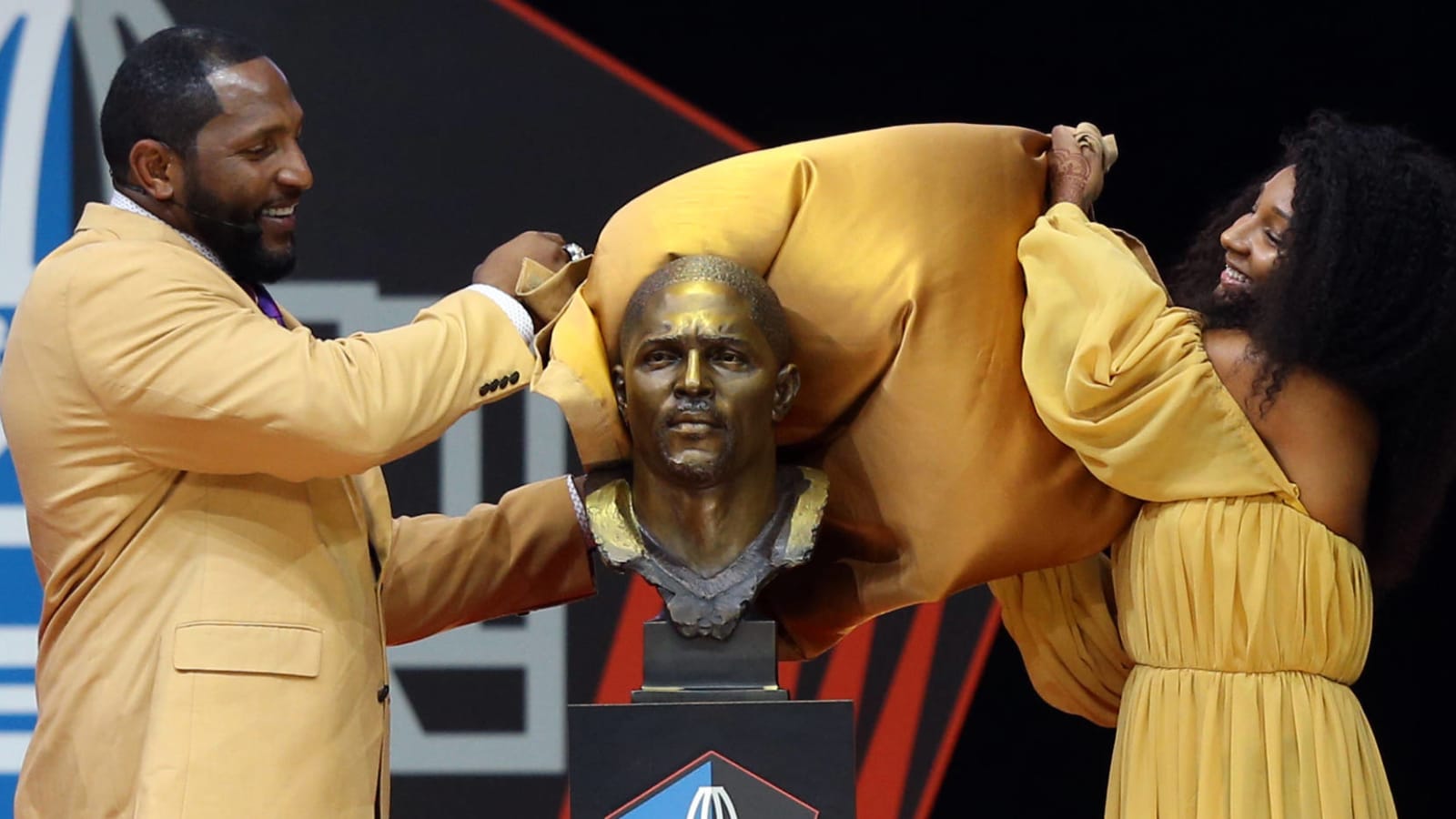
When a Hall of Fame bronze bust is perceived as a 'bust'
Former Baltimore Ravens linebacker Ray Lewis stood on a stage last August and pulled a cover off his bronze likeness. This is part of the ritual of a football player being inducted into the Pro Football Hall of Fame since its opening more than 50 years ago; those bronze busts are then added to a gallery in the Hall in Canton, Ohio, where, according to former Raiders coach John Madden, they wait until nighttime and then launch into spirited conversations about the merits of the Cover 2 defense.
Regardless of their perceived sentience, it is safe to assume that Lewis did not perceive any issues with his Hall of Fame bust or he would have expressed them before the official unveiling. But the hive-mind of the Internet did see a problem. And that hive-mind attacked, declaring that this likeness of Lewis looked like ... well, anyone but Lewis.
Someone saw actor Damon Wayans; someone else declared it looked like quarterback Warren Moon. But perhaps the sickest burn of all came from a handful of people who likened it to what’s now considered the ultimate disaster in the history of modern sports sculpture: the eccentric bust of soccer star Cristiano Ronaldo that stood in front of a Portuguese airport and earned worldwide mockery on social media. (It was replaced by another bust of Ronaldo.)
As we head into the unveiling Saturday of eight more busts at the Pro Football Hall of Fame, it is worth pointing out that this is kind of a weird tradition in the first place. At a basic level, sports and art have opposite goals: One is a zero-sum pursuit that’s defined by winning and losing, and the other is based entirely on our varied opinions of what’s good and what’s terrible. You may see Marcel Duchamp’s masterwork as a urinal ripped off a wall; the art world views it as the work of a genius. Unless you have strong feelings about High Pockets Kelly, that duality doesn’t apply at the same level to sports.
And so I wanted to know more about what it was like for an artist to reside in this strange netherworld between the objective and the subjective, and if perhaps we were (literally) looking at these supposed mistakes through the wrong lens. And that led me to Scott Myers, who’s been sculpting busts for the Pro Football Hall of Fame for two decades.
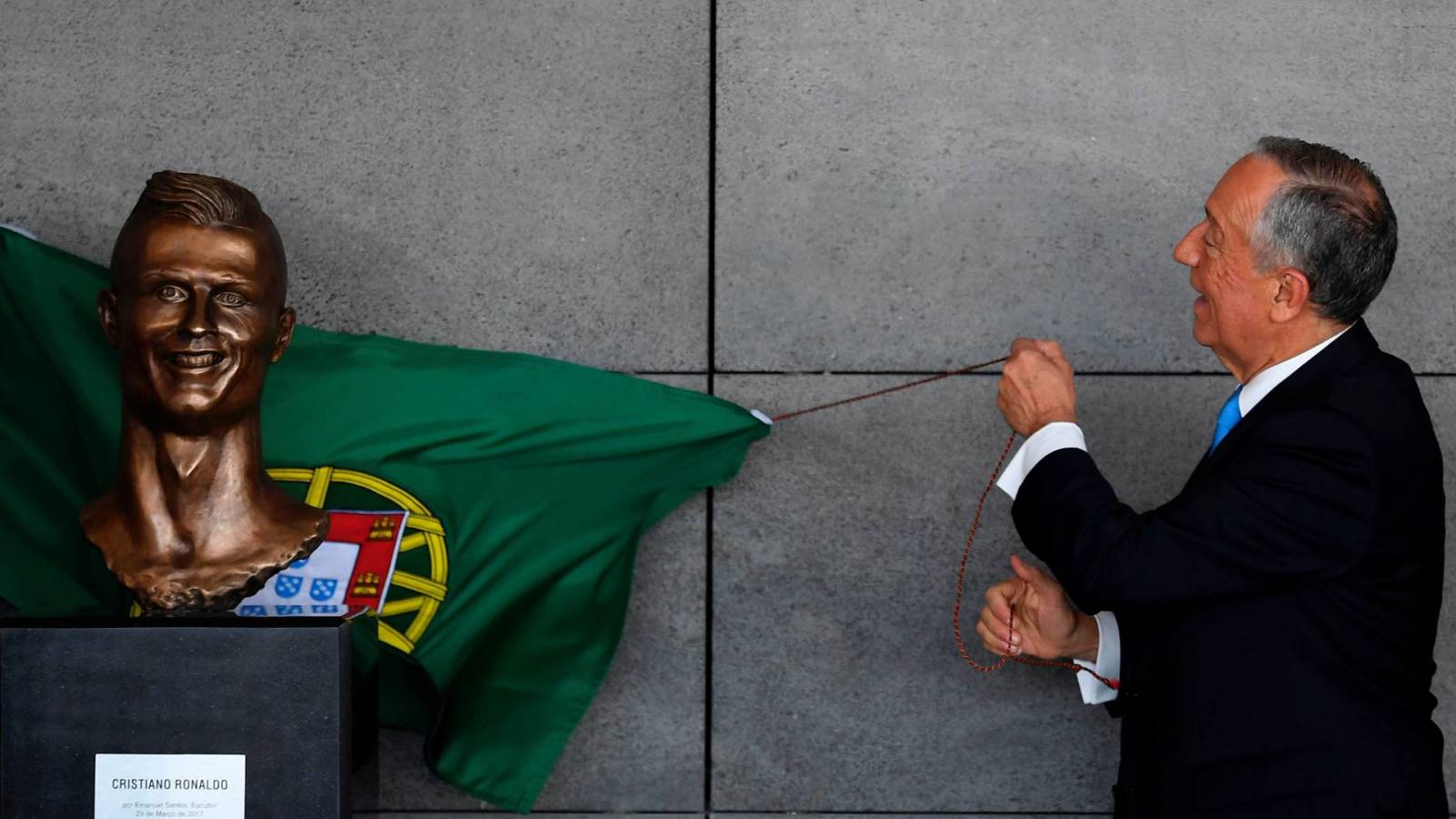
It should be noted that Myers did not sculpt the bust of Lewis, and for obvious reasons related to his continued livelihood, he declined to comment on anything about it. But Myers was willing to walk me through the process of what it was like to create a Hall of Fame bust. And it’s probably more involved than you think. There are meetings with each player or coach or contributor, in which they choose an era in which they’d like to be depicted. Legendary Cowboys executive Gil Brandt, a member of the Class of 2019, wanted to be depicted when he was in his 50s, which meant Myers had to size up an 86-year-old man and retroactively make him look younger.
Some of that can be done by looking at pictures, Myers says. The structure of person’s skull tends to stay consistent over the course of his life. And then the sculptor and inductee meet face-to-face, and, since this is his likeness, the inductee can essentially dictate what he wants.
“You can’t imagine what you see in person that you can’t see in photographs,” Myers says. With Hall of Fame defensive end Chris Doleman, for instance, Myers got a sense from pictures he saw that Doleman’s nose came to a pointy end; when they met in person, Myers realized it was far rounder. And these are the small details that make the difference. Because former linebacker Kevin Greene wanted to be sculpted with long hair, Myers had to make sure he got the flow of that hair exactly right.
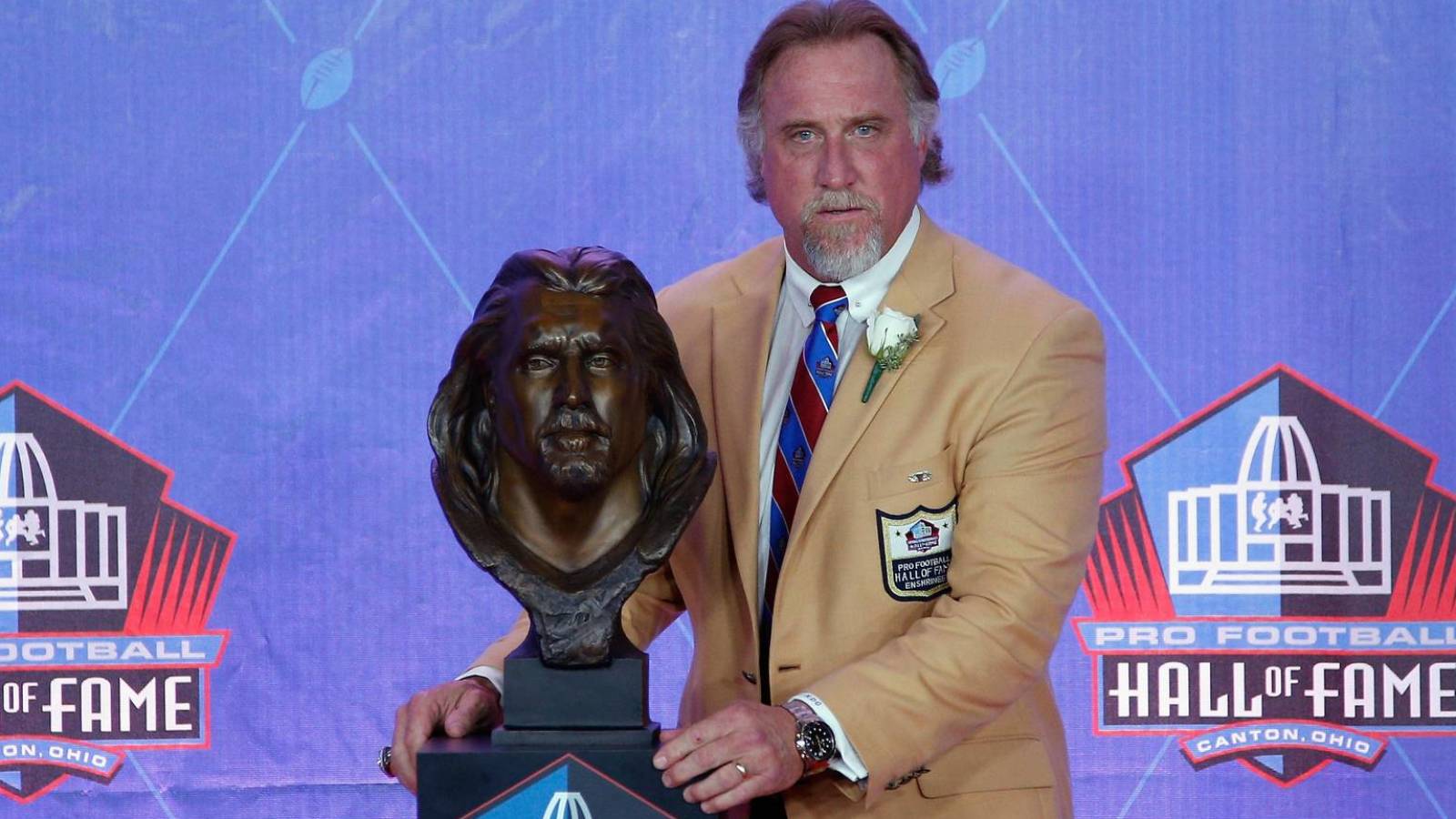
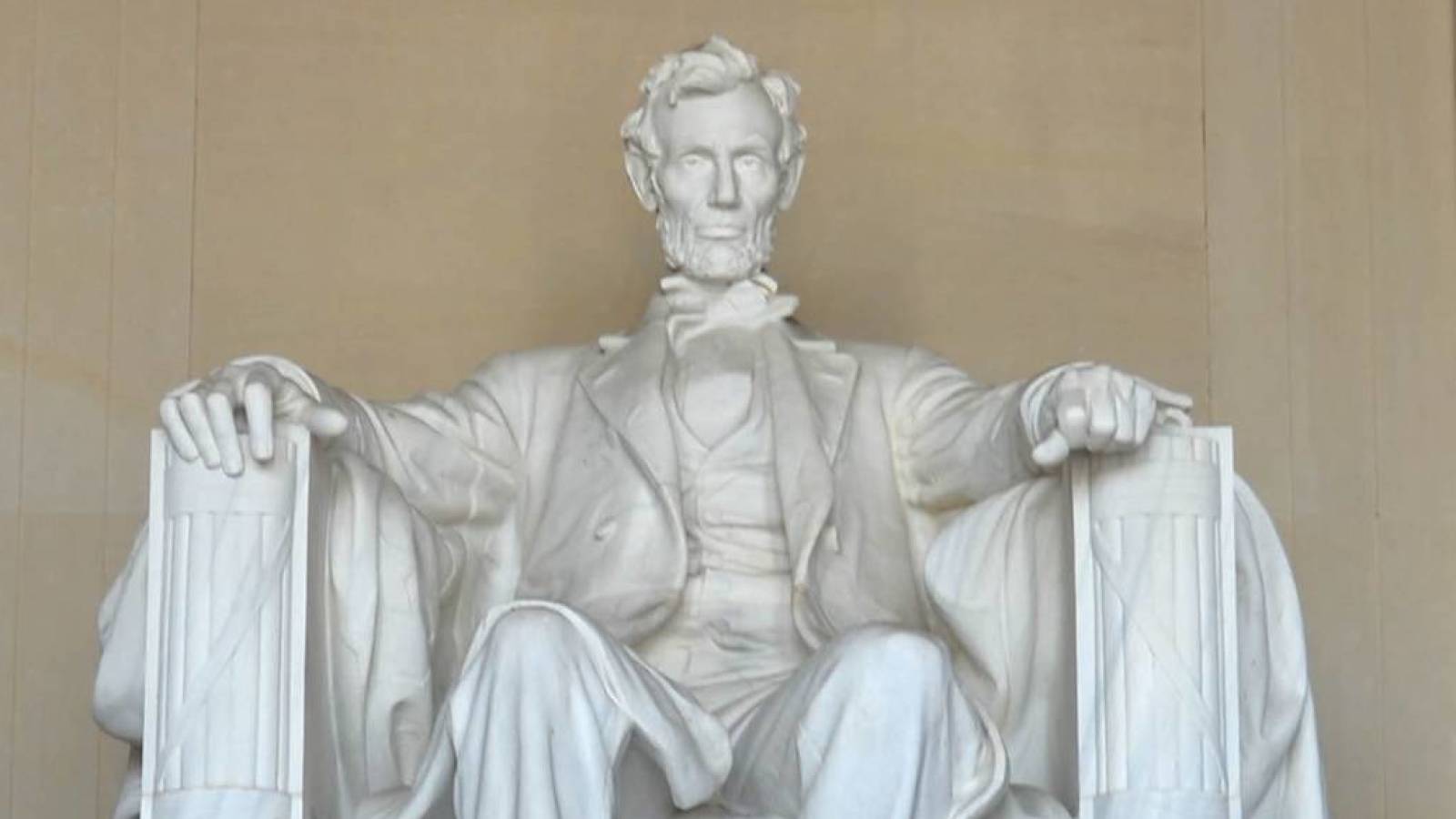
To Myers, the gold standard for sculpture will forever be Daniel Chester French’s sculpture of Abraham Lincoln that graces the Lincoln Memorial: beautiful and instantly recognizable. Myers has had players fist bump him and hug him and even kiss him when he gets their likeness right; one player thanked him “for making me look as good as I’ve ever looked.”
“I want to make sure when I look across the room that people go, ‘Oh, there’s Kevin Greene,’” Myers says. “I go back to those tiny yearbook photos you see where there’s 300 people in a class, but you can still pick them all out.”
So what happens, then, when things go wrong? How is it that a Ronaldo sculpture becomes an international incident, or a plaque of soccer player Brandi Chastain intended for the Bay Area Sports Hall of Fame (created by an unknown sculptor who will likely never be outed) comes out looking like the ghost of Mickey Rooney? The reasons are numerous, says New York-based sculptor Michael Keropian, but it may come down to one essential factor: Many of the people creating these likenesses aren’t really qualified to do so in the first place.
“When you contact a lawyer, accountant, plumber, architect, or doctor, you expect that individual has trained in his field to a high level,” says Keropian, who mostly sculpts likenesses of historical figures. “But there’s no standard in place here. It isn’t always the best sculptor who gets the job, and many amateur sculptors take on jobs they shouldn’t have in the first place.”
Often, says Keropian, thanks to the dearth of arts education in America and beyond, the committees who commission these likenesses don’t know much about art, either. That leads to what Myers calls a “lack of fundamentals,” a phrase we hear applied to sports all the time, but one that also applies to art: ideas about form and volume, a general sense of the proportions of the human face that went completely off-kilter in the case of those Chastain and Ronaldo likenesses. And maybe a sculptor gets so caught up in his or her own vision, Keropian says, that they can’t even see what’s gone wrong.
This, in fact, is exactly what appeared to happen in the case of the Ronaldo bust. It was completed by a Portugese airport worker who had never actually sculpted a bust before.
Still, before you reflexively take to Twitter to celebrate the next great Hall of Fame disaster, it is worth watching the surprisingly emotional short documentary Bleacher Report did on that sculptor, Emanuel Jorge da Silva Santos, and the ramifications of this so-called mistake that nearly ruined his life. You might come out of it wondering if our own perceptions and our knee-jerk reactions -- our rush to mock, rather than to educate -- are far more of a problem than the sculpture itself.
More must-reads:
- Yardbarker's Ultimate NFL Hall of Fame tiers
- Stargazing: Pro Football Hall of Fame crystal ball
- The 'Active three-TD catch NFL games' quiz
Breaking News
Trending News
Customize Your Newsletter
 +
+
Get the latest news and rumors, customized to your favorite sports and teams. Emailed daily. Always free!






